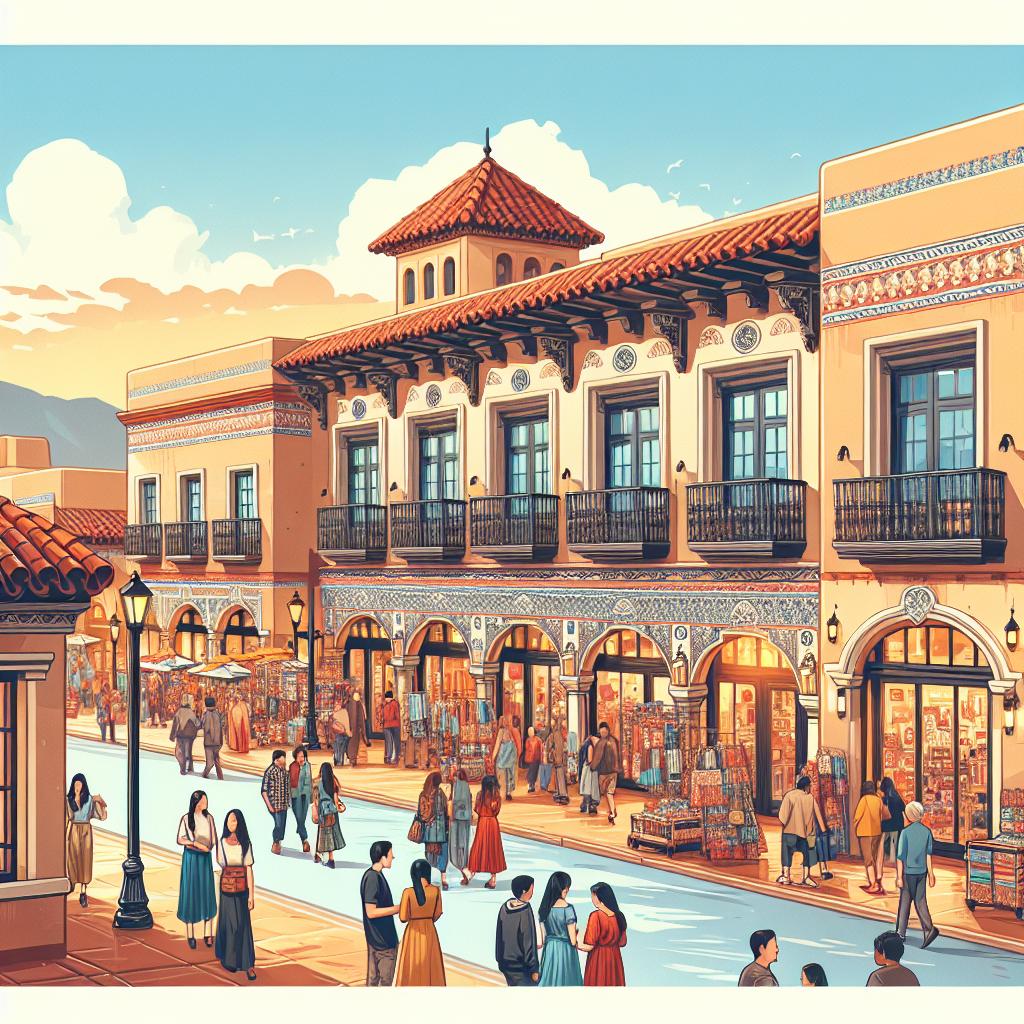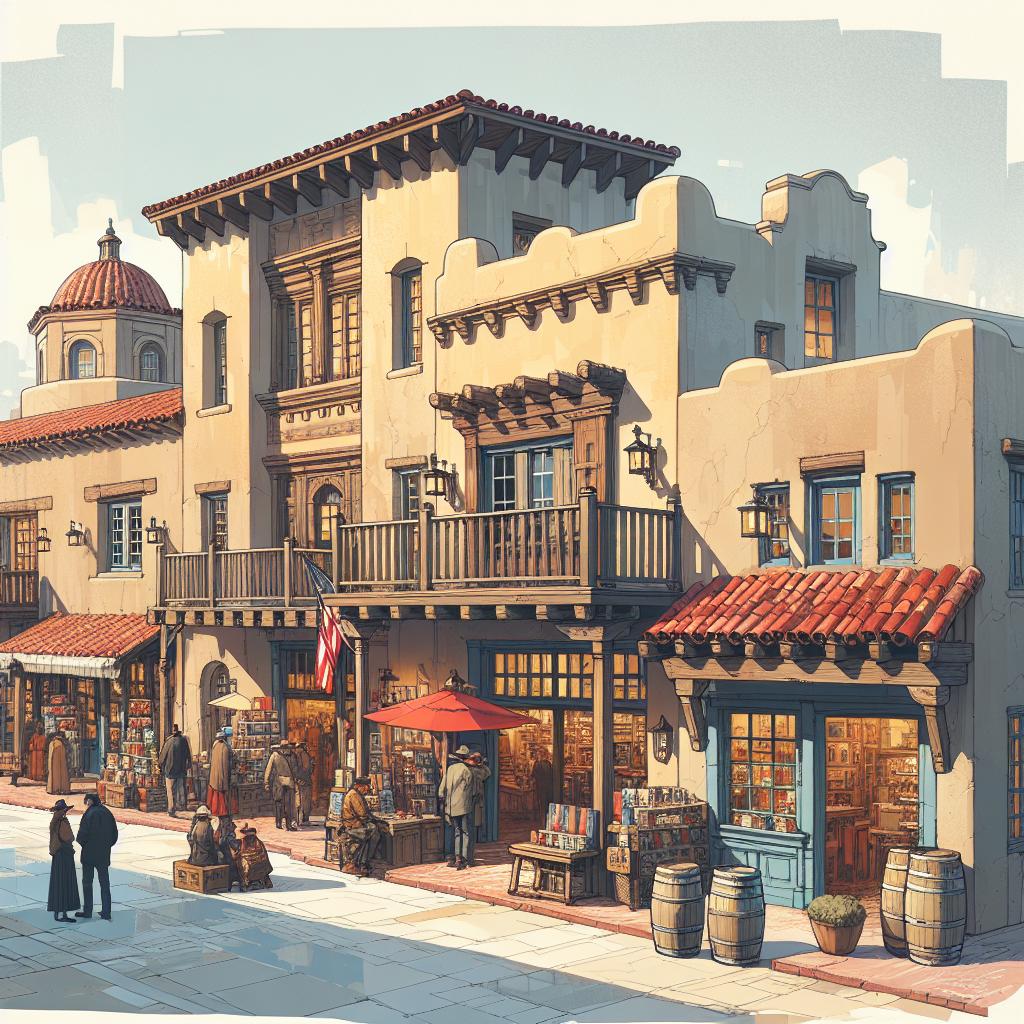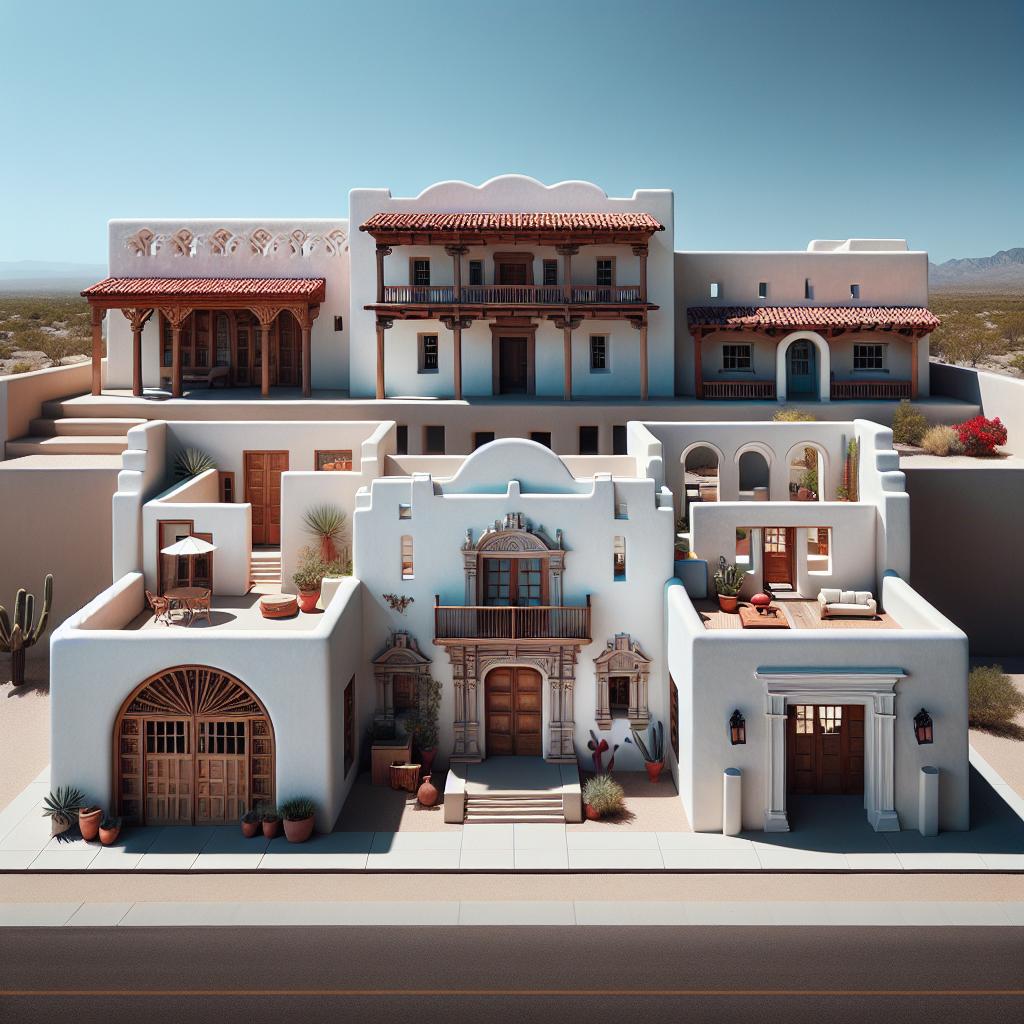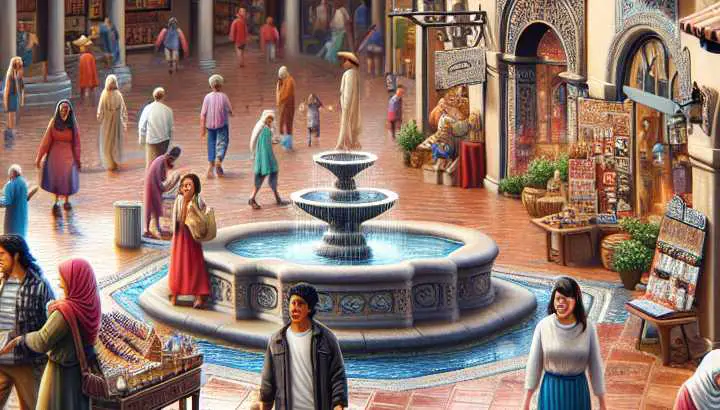The Influence of Spanish Colonial Style

1. Characteristics and Elements of Spanish Colonial Architecture
When embarking on a journey to uncover the secrets of Spanish Colonial Architecture, one might imagine themselves as Indiana Jones, with a fedora sat jauntily on their head, a whip curled at their side, and the John Williams theme song blaring loudly in the background. Sorry to burst your bubble, but the adventure is not quite that adrenaline-filled, especially since most of these architectural treasures are lethargically basking in warm Spanish sunshine rather than hideously lurking deep in a dark cave guarded by a tribe of hideous, cannibalistic natives. Yet, it does contain a great deal of exploration and discovery about an age-old architectural style, so get ready to delve into it with as much zest and gusto as Indy himself might muster.
Characteristics of Spanish Colonial Architecture
Spanish Colonial Architecture embraces simplicity, boldness, and practicality while also possessing a majestic flair that would give even Queen Bey a run for her money. At its core, this architecture screams, “I may be about functionality, but honey, I’m a star!” It evolved during colonial rule in the 16-19th centuries and, spoiler alert, is characterized by its Spanish and Moorish influences. You’ll see plenty of hefty wooden doors, rustic timber beams, and luscious courtyards that might make you consider starting a lemonade stand in the style of a 16th-century Spanish colonizer.
Domes, archways, and courtyards are the life and soul of this architectural party. Domes are often covered in colorful tiles, lending a vibrant aura, while archways keep things cool. And the courtyards…well, just imagine sipping a glass of sangria underneath a fig tree while the sounds of a flamenco guitar dance through the air. Lovely, isn’t it?
Elements of Spanish Colonial Architecture
The first thing to dive into when examining Spanish Colonial Architecture is the widespread use of thick, stucco walls. They’re about as fundamental to the building as chocolate is to a good cake. These walls help maintain a comfortable temperature within the building – cool in the scorching summer and warm during the winter.
Moving into the heart of the building, you’ll often discover a cozy internal courtyard, a true oasis in the heart of your home. It allows fresh air and natural light to flow in, like a breath of fresh air after being stuck in your old man’s smoking lounge. Plus, it gives you a peaceful spot for your morning meditation routine or dog yoga.
Tile work is another fascinating element that showcases the artistry in Spanish Colonial Architecture.
“The names were all strange, and all indifferent to me, but those fine square wooden mansions, of a tasteful architecture, and a pale buff-color, withdrawing themselves in quiet reserve from the quiet street, gave me an impression of family as an actuality and a force which I had never had before, but which no Westerner can yet understand the East without taking into account”
~ Unknown, Unknown
You may stumble upon hand-painted tiles adorning walls, floors, and even ceilings. Each one looks like a little Picasso in-the-making. They add a spark of color and a healthy dose of personality, elevating the Spanish Colonial Architecture from drab to fab.
Let’s not forget about the powerful wooden elements. Heavy, rustic woods are usually used for doors, furniture, and ceiling beams. It’s like being inside a Spanish version of Snow White’s cottage, but without the seven squatters or the overly persistent “prince”. The use of wood might seem a bit commonplace, but in Spanish Colonial Architecture, it’s anything but basic.
So there you have it, an introduction to Spanish Colonial Architecture. It’s a delightful medley of Moorish influences, colonial needs, and a healthy dollop of Spanish ‘sabor’. It is practical, approachable yet steeped in a grandeur that never fails to leave a lasting impression. Just like a good paella, this architectural style combines simple ingredients to create something delectable, and just a touch magical. Next time you cross paths with a Spanish Colonial building, take a moment to tip your imaginary fedora to it. Indy would certainly approve.
Read More: 1. Characteristics And Elements Of Spanish Colonial Architecture

2. Spanish Colonial Impact on American Architectural Designs
The influence of Spanish colonial architecture on American edifices is much like the tequila in your margarita – it’s powerful, intoxicating, and sometimes makes you do things you never thought possible. Indeed, without the Spanish colonial footprint, American architecture would be as bland as a burrito without chili.
Imagine you’re meandering through the cobbled streets of Santa Fe, New Mexico, or perhaps the sun-kissed boulevards of Santa Barbara, California. The buildings you’re drooling over like you would at a taco truck at 2 a.m. after a night out, that’s Spanish Colonial architecture — all wrapped up in its adobe-goodness, dripping with ingenuity, charm, and just a touch of melodrama.
Spanish Colonial Architecture: Built like a Churro, Loved like a Churro
Much like a well-crafted churro, Spanish Colonial structures were built to withstand the ravages of time – and the odd destructive señor Storm. The ‘Muy Definitiono Grande’ of sturdy construction, Spanish colonial buildings employed local materials like adobe, a form of sun-dried mud brick. These weren’t your grandma’s mud pies, mind you, but structures built to endure, like the formidable power of the flamenco dancer’s stomp, stubborn as a bullfighter, and practical as a siesta on a hot summer day.
And speaking about the hot summer days, these structures didn’t just rely on outlasting the elements but cunningly used smart techniques to try and outwit them. Thick walls kept the interiors cool in the searing heat of summer and cozy during the chili-caressing winter. Narrow windows were like carefully cultivated peepholes, letting in just the right amount of light and being miserly with the heat ingress.
A Touch of Spanish Drama
Have you ever seen a Spanish telenovela? Then you have an idea of the level of drama that Spanish architecture swings at. Instead of love triangles and rampant amnesia, though, it’s dramatic arches and heart-stopping wrought-iron details.
“There was now some hope of detaching the latter from Protestant alliances, and Philip’s designs upon Virginia were subordinated to the far larger purpose of winning back England herself into the Catholic ranks”
~ Unknown, Unknown
Touches of Moorish influence can also be seen in the intricate tile work, a design palate that’s hotter than a habanero pepper.
Even the colors chosen in Spanish Colonial Architecture are pure romance. The earthy shades and stunning contrasts are as captivating as the endearing, entrancing hues that adorn a traditional Spanish flamenco dancer’s costume.
The Mission-Revival Influence
Take your architectural spectacle a few margaritas further, and you stumble upon the Mission Revival style. If architecture was a piñata, then Mission-Revival would be the sweet rush of candies following a well-aimed whack. This style irradiated from the Catholic Missions across California and sported the decorative “knob and button” molding like a flamboyant matador’s costume. Yes, more is more in Mission Revival – decoratively speaking!
The Legacy on American Design
So potent was the sangria of Spanish Colonial and Mission Revival influence that it seeped into early 20th-century American architecture—you might have heard about a little style called Spanish Revival? It’s the architectural equivalent of salsa dancing—flamboyant, passionate, full-bodied, and not willing to take a step back.
In the end, you see, the Spanish Colonial style is a bit like churros and tequila – it may come from España, but we’ve welcomed it with open arms, and bellies, into the American culture and architecture. And that, mi amigos, is something worth raising your margaritas to!
Read More: 2. Spanish Colonial Impact On American Architectural Designs

3. Evolution and Modern Interpretations of Spanish Colonial Style
Once upon a time, around the 16th century, the Spaniards who explored new lands came up with a brilliant idea. Was it this rousing idea that led them to discover the fountain of youth? Or was it the recipe for the world’s best tapas? Nope! It was something much more exciting (at least to architecture buffs) – the Spanish Colonial style! So sit back, grab a cup of churro-dunking hot chocolate, and journey with us as we explore not just the evolution, but also the modern interpretations of the ever-so-elegant, Spanish Colonial Style.
During Spain’s colonizing endeavors across the globe, they birthed architectural offspring that were imbued with Spanish flair and the indigenous charm of the regions they colonized. Spanish Colonial Style was born as the brainchild of these unique fusions. It’s like flamenco meeting the bullfight, producing a style synonymous with thick walls, stucco exteriors, terra cotta roof tiles, courtyards, and ornate iron elements.
Through the years, like a fine Rioja, Spanish Colonial Style has aged exquisitely. It has evolved, adapted, and yet, managed to hold on lustrously to its authentic roots – akin to a flamenco dancer nailing the traditional steps while effortlessly incorporating modern salsa moves.
Spanish Colonial Revival, which emerged in the early 20th century, was a fan-favorite amongst architects who had a predilection for traditional aesthetics intertwined with the romance of the bygone era. Think Antonio Banderas in ‘The Mask of Zorro,’ but this time it’s an architectural style swishing its cape and gallantly stepping into the modern times.
The modern interpretation of Spanish Colonial Style is delightfully like a tapas platter – it brings together snippets of everything, creating an overall vibrant ambiance.
“”During the night, upwards of three thousand of the rebellious rogues, as Fanshawe styled them, disbanded.””
~
William Harrison Ainsworth, Boscobel: or, the royal oak
It’s the art of complementing heavy traditional wooden elements with bright textiles and popping colors, infusing the old-world finesse with hearty doses of contemporary chicness. It involves creating a space where both, grandma’s ancient armoire and your neon pop art feel perfectly at home, whilst whispering ‘Muy bien!’
Spacious cooking spaces are adorned with terracotta or glazed tiles and paired with state-of-the-art modern appliances. Forget about ‘La Tomatina,’ more tomatoes have died on these stunning kitchen counters while whipping up a Spanish tortilla or a batch of fiery patatas bravas.
What about the exteriors? Well, while the traditional stucco walls, terracotta tiles, and picturesque courtyards remain as the timeless champions, they’ve been modernized charmingly. Now, the courtyards don’t just have a burbling fountain as the centerpiece, but may also boast a modish fire pit or suave outdoor kitchenette – perfect for a cozy alfresco dinner party under the stars, complete with a cool jug of sangria!
So, as you see, today’s Spanish Colonial style is a vivacious merge of the old and the new – an artful blend of tradition and modernity. Much like Penélope Cruz charming us in an Almodóvar movie dressed in Chanel, it marries the deeply ingrained Spanish character with the refreshing panache of modern global influences.
And as we conclude our journey across the evolution and modern interpretation of Spanish Colonial Style, we leave you with this thought – Isn’t it amazing how an architectural design, born centuries ago in a fusion of cultures and ideas, continues to evolve and adapt, captivating us all with its ever-refreshing charm? Now that’s what you call, “La Evolución Magnífica!”
Learn More: 3. Evolution And Modern Interpretations Of Spanish Colonial Style
